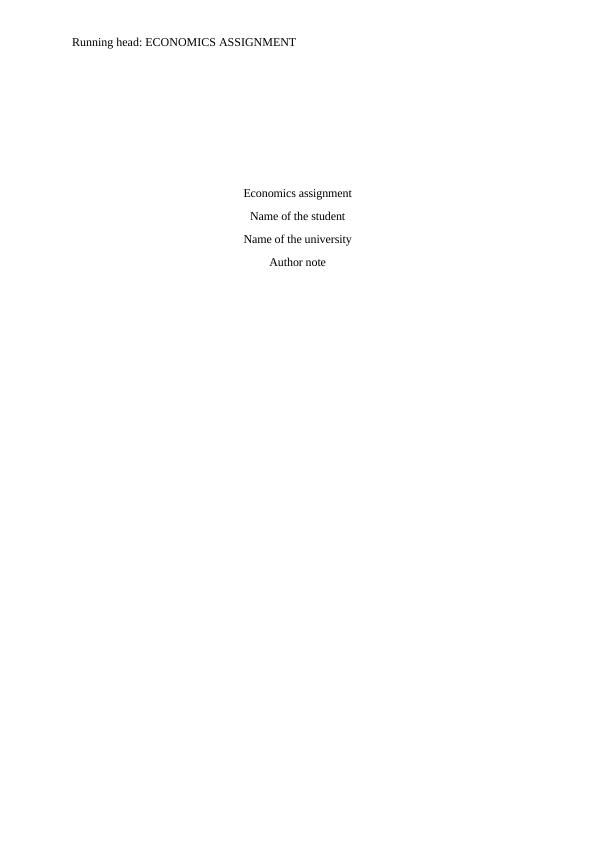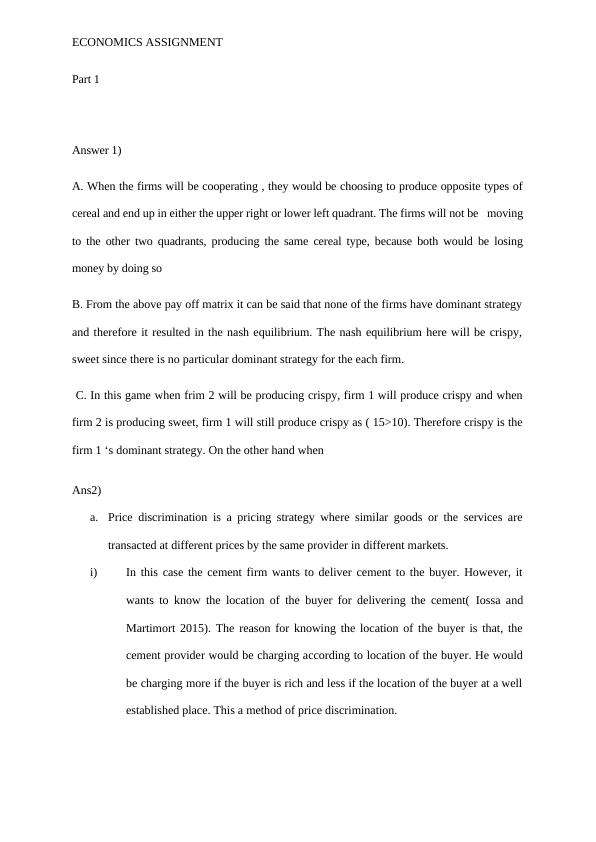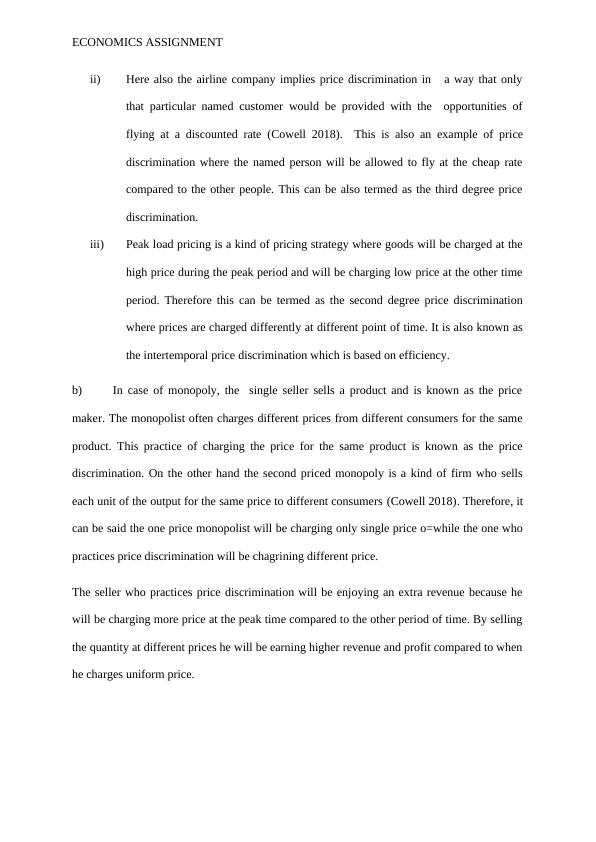Economics Assignment - Microeconomics, Price Discrimination, Monopoly
Instructions: Do you own work without the use of other sources. Submit one pdf file that contains your work. Part I. (11 marks each, 22 marks total) 1. Strategic Decisions: Suppose two food firms were deciding upon which type of breakfast cereal to introduce. They could choose a sweet cereal or a crispy cereal but not both. The two firms are not ‘attached’ to either type but want to make a profit. The payoff matrix is such that if they both introduce the same type of cereal, both will lose money. But if they choose different cereal types, both will make money. The payoff matrix looks like this: (1st number, firm 1; 2nd #, firm 2) Firm 2 Crispy Sweet Firm 1 Crispy -5, -5 10, 10 Sweet 10, 10 -5, -5 A. If the firms could cooperate, which choice would they make? (4 pts) B. Show whether either firm has a dominant strategy and what they would do in terms of producing sweet or crispy. Consider a simultaneous play game only. (3 pts) C. Now consider a payoff matrix such as this: (4 pts) Firm 2
Added on 2023-05-30
About This Document
Economics Assignment - Microeconomics, Price Discrimination, Monopoly
Instructions: Do you own work without the use of other sources. Submit one pdf file that contains your work. Part I. (11 marks each, 22 marks total) 1. Strategic Decisions: Suppose two food firms were deciding upon which type of breakfast cereal to introduce. They could choose a sweet cereal or a crispy cereal but not both. The two firms are not ‘attached’ to either type but want to make a profit. The payoff matrix is such that if they both introduce the same type of cereal, both will lose money. But if they choose different cereal types, both will make money. The payoff matrix looks like this: (1st number, firm 1; 2nd #, firm 2) Firm 2 Crispy Sweet Firm 1 Crispy -5, -5 10, 10 Sweet 10, 10 -5, -5 A. If the firms could cooperate, which choice would they make? (4 pts) B. Show whether either firm has a dominant strategy and what they would do in terms of producing sweet or crispy. Consider a simultaneous play game only. (3 pts) C. Now consider a payoff matrix such as this: (4 pts) Firm 2
Added on 2023-05-30
End of preview
Want to access all the pages? Upload your documents or become a member.



